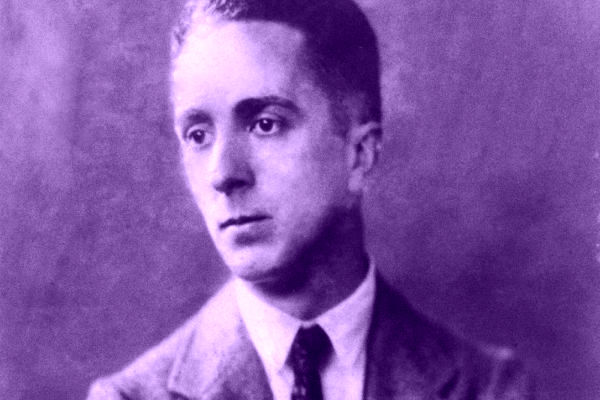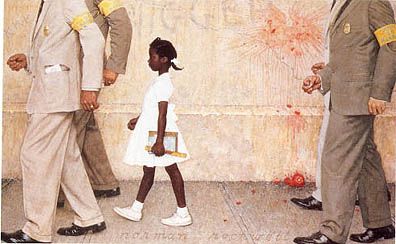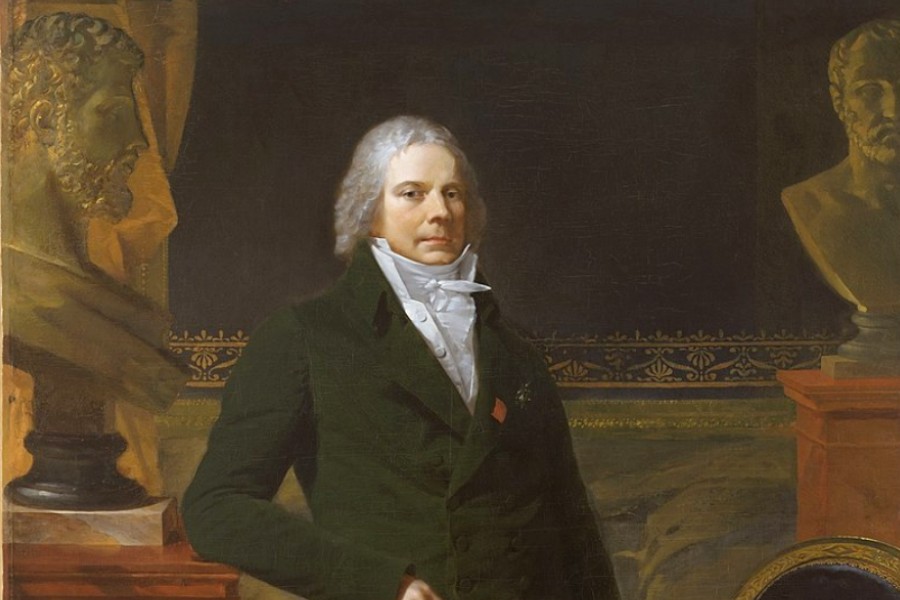 Central Harlem’s Norman Perceval Rockwell, February 3, 1894 – November 8, 1978, was a 20th-century American painter and illustrator. His works enjoy a broad popular appeal in the United States for their reflection of American culture. Rockwell is most famous for the cover illustrations of everyday life scenarios he created for The Saturday Evening Post magazine for more than four decades.
Central Harlem’s Norman Perceval Rockwell, February 3, 1894 – November 8, 1978, was a 20th-century American painter and illustrator. His works enjoy a broad popular appeal in the United States for their reflection of American culture. Rockwell is most famous for the cover illustrations of everyday life scenarios he created for The Saturday Evening Post magazine for more than four decades.
Among the best-known of Rockwell’s works are the Willie Gillis series, Rosie the Riveter, Saying Grace (1951), The Problem We All Live With, and the Four Freedoms series. He is also noted for his work for the Boy Scouts of America (BSA), producing covers for their publication Boys’ Life, calendars, and other illustrations.
Norman Rockwell was born on February 3, 1894, in Harlem as a child at 789 St. Nicholas Avenue to Jarvis Waring Rockwell and Anne Mary “Nancy” (born Hill) Rockwell.
Norman Rockwell was born on February 3, 1894, in Harlem as a child at 789 St. Nicholas Avenue to Jarvis Waring Rockwell and Anne Mary “Nancy” (born Hill) Rockwell. His earliest American ancestor was John Rockwell (1588–1662), from Somerset, England, who immigrated to America probably in 1635 aboard the ship Hopewell and became one of the first settlers of Windsor, Connecticut.
He had one brother, Jarvis Waring Rockwell, Jr., older by a year and a half. Jarvis Waring, Sr., was the manager of the New York office of a Philadelphia textile firm, George Wood, Sons & Company, where he spent his entire career.
Norman transferred from high school to the Chase Art School at the age of 14. He then went on to the National Academy of Design and finally to the Art Students League.
There, he was taught by Thomas Fogarty, George Bridgman, and Frank Vincent DuMond; his early works were produced for St. Nicholas Magazine, the Boy Scouts of America (BSA) publication Boys’ Life and other juvenile publications. Joseph Csatari carried on his legacy and style for the BSA.
As a student, Rockwell was given smaller, less important jobs. His first major breakthrough came in 1912 at age eighteen with his first book illustration for Carl H. Claudy’s Tell Me Why: Stories about Mother Nature.
In 1913, the nineteen-year-old Rockwell became the art editor for Boys’ Life, published by the Boy Scouts of America, a post he held for three years (1913–16).
As part of that position, he painted several covers, beginning with his first published magazine cover, Scout at Ship’s Wheel, appearing on the Boys’ Life September 1913 edition.
Rockwell’s family moved to New Rochelle, New York when Norman was 21 years old and shared a studio with the cartoonist Clyde Forsythe, who worked for The Saturday Evening Post. With Forsythe’s help, he submitted his first successful cover painting to the Post in 1916, Mother’s Day Off (published on May 20).
He followed that success with Circus Barker and Strongman (published on June 3), Gramps at the Plate (August 5), Redhead Loves Hatty Perkins (September 16), People in a Theatre Balcony (October 14) and Man Playing Santa (December 9).
Rockwell was published eight times total on the Post cover within the first twelve months. Norman Rockwell published a total of 323 original covers for The Saturday Evening Post over 47 years.
His Sharp Harmony appeared on the cover of the issue dated September 26, 1936; it depicts a barber and three clients, enjoying an a cappella song. The image was adopted by SPEBSQSA in its promotion of the art.
Rockwell’s success on the cover of the Post led to covers for other magazines of the day, most notably The Literary Digest, The Country Gentleman, Leslie’s Weekly, Judge, Peoples Popular Monthly and Life Magazine.
During World War I, he tried to enlist into the U.S. Navy but was refused entry because at 6 feet (1.8 m) tall and 140 pounds (64 kg) he was eight pounds underweight.
To compensate, he spent one night gorging himself on bananas, liquids and doughnuts and weighed enough to enlist the next day. However, he was given the role of a military artist and did not see any action during his tour of duty.
In 1943, during World War II, Rockwell painted the Four Freedoms series, which was completed in seven months and resulted in his losing 15 pounds. The series was inspired by a speech by Franklin D. Roosevelt, in which he described four principles for universal rights: Freedom from Want, Freedom of Speech, Freedom of Worship, and Freedom from Fear.
The paintings were published in 1943 by The Saturday Evening Post. The United States Department of the Treasury later promoted war bonds by exhibiting the originals in 16 cities.
Rockwell himself considered “Freedom of Speech” to be the best of the four. That same year, a fire in his studio destroyed numerous original paintings, costumes, and props.
Because the period costumes and props were irreplaceable, the fire split his career into 2 phases, the 2nd phase depicting modern characters and situations.
Rockwell was contacted by writer Elliott Caplin, brother of cartoonist Al Capp, with the suggestion that the three of them should make a daily comic strip together, with Caplin and his brother writing and Rockwell drawing.
King Features Syndicate is reported to have promised a $1,000/week deal, knowing that a Capp-Rockwell collaboration would gain strong public interest. However, the project was ultimately aborted as it turned out that Rockwell, known for his perfectionism as an artist, could not deliver material as fast as required of him for a daily comic strip.
During the late 1940s, Norman Rockwell spent the winter months as artist-in-residence at Otis College of Art and Design. Students occasionally were models for his Saturday Evening Post covers. In 1949, Rockwell donated an original Post cover, “April Fool”, to be raffled off in a library fund raiser.
In 1959, after his wife Mary died unexpectedly from a heart attack, Rockwell took time off from his work to grieve. It was during that break that he and his son Thomas produced Rockwell’s autobiography, My Adventures as an Illustrator, which was published in 1960. The Post printed excerpts from this book in eight consecutive issues, the first containing Rockwell’s famous Triple Self-Portrait.

Rockwell’s last painting for the Post was published in 1963, marking the end of a publishing relationship that had included 321 cover paintings. He spent the next ten years painting for Look magazine, where his work depicted his interests in civil rights, poverty and space exploration.
In 1968, Rockwell was commissioned to do an album cover portrait of Mike Bloomfield and Al Kooper for their record The Live Adventures of Mike Bloomfield and Al Kooper.
During his long career, he was commissioned to paint the portraits for Presidents Eisenhower, Kennedy, Johnson, and Nixon, as well as those of foreign figures, including Gamal Abdel Nasser and Jawaharlal Nehru. One of his last works was a portrait of Judy Garland in 1969.
A custodianship of his original paintings and drawings was established with Rockwell’s help near his home in Stockbridge, Massachusetts, and the Norman Rockwell Museum is still open today year round. Norman Rockwell Museum is the authoritative source for all things Norman Rockwell.
The museum’s collection is the world’s largest, including more than 700 original Rockwell paintings, drawings, and studies. The Rockwell Center for American Visual Studies at the Norman Rockwell Museum is a national research institute dedicated to American illustration art.
When he began suffering poor health, he placed his studio and the contents with the Norman Rockwell Museum, which was formerly known as the Stockbridge Historical Society and even more formerly known as the Old Corner house, in a trust.
For “vivid and affectionate portraits of our country,” Rockwell received the Presidential Medal of Freedom, the United States of America’s highest civilian honor, in 1977.
Rockwell died November 8, 1978, of emphysema at age 84 in Stockbridge, Massachusetts. First Lady Rosalynn Carter attended his funeral.
Rockwell married his first wife, Irene O’Connor, in 1916. Irene was Rockwell’s model in Mother Tucking Children into Bed, published on the cover of The Literary Digest on January 19, 1921. However, the couple were divorced in 1930.
Depressed, he moved briefly to Alhambra, California as a guest of his old friend Clyde Forsythe. There he painted some of his best-known paintings including “The Doctor and the Doll”. While there he met and married schoolteacher Mary Barstow.
The couple returned to New York shortly after their marriage. They had three children: Jarvis Waring, Thomas Rhodes and Peter Barstow. The family lived at 24 Lord Kitchener Road in the Bonnie Crest neighborhood of New Rochelle, New York.
Rockwell and his wife were not very religious, although they were members of St. John’s Wilmot Church, an Episcopal church near their home, and had their sons baptized there as well. Rockwell moved to Arlington, Vermont, in 1939 where his work began to reflect small-town life.
In 1953, the Rockwell family moved to Stockbridge, Massachusetts, so that his wife could be treated at the Austen Riggs Center, a psychiatric hospital at 25 Main Street, down Main Street from where Rockwell set up his studio.
Rockwell himself received psychiatric treatment from the analyst Erik Erikson, who was on staff at Riggs. Erikson is said to have told the artist that he painted his happiness, but did not live it. In 1959, Mary died unexpectedly of a heart attack. Rockwell married his third wife, retired Milton Academy English teacher Mary Leete “Molly” Punderson, on October 25, 1961.
Norman Rockwell was a prolific artist, producing over 4,000 original works in his lifetime. Most of his works are either in public collections, or have been destroyed in fire or other misfortunes. Rockwell was also commissioned to illustrate over 40 books including Tom Sawyer and Huckleberry Finn.
His annual contributions for the Boy Scouts’ calendars between 1925 and 1976 (Rockwell was a 1939 recipient of the Silver Buffalo Award, the highest adult award given by the Boy Scouts of America), were only slightly overshadowed by his most popular of calendar works: the “Four Seasons” illustrations for Brown & Bigelow that were published for 17 years beginning in 1947 and reproduced in various styles and sizes since 1964.
Illustrations for booklets, catalogs, posters (particularly movie promotions), sheet music, stamps, playing cards, and murals (including “Yankee Doodle Dandy” and “God Bless the Hills”, which was completed in 1936 for the Nassau Inn in Princeton, New Jersey) rounded out Rockwell’s œuvre as an illustrator.
In 1969, as a tribute to Rockwell’s 75th-year birthday, officials of Brown & Bigelow and the Boy Scouts of America asked Rockwell to pose in Beyond the Easel, the calendar illustration that year.
Rockwell’s work was dismissed by serious art critics in his lifetime. Many of his works appear overly sweet in modern critics’ eyes, especially the Saturday Evening Post covers, which tend toward idealistic or sentimentalized portrayals of American life – this has led to the often-deprecatory adjective “Rockwellesque”. Consequently, Rockwell is not considered a “serious painter” by some contemporary artists, who often regard his work as bourgeois and kitsch.
Writer Vladimir Nabokov sneered that Rockwell’s brilliant technique was put to “banal” use, and wrote in his book Pnin: “That Dalí is really Norman Rockwell’s twin brother kidnapped by Gypsies in babyhood”.
He is called an “illustrator” instead of an artist by some critics, a designation he did not mind, as it was what he called himself.
However, in his later years, Rockwell began receiving more attention as a painter when he chose more serious subjects such as the series on racism for Look magazine. One example of this more serious work is The Problem We All Live With, which dealt with the issue of school racial integration. The painting depicts a young African American girl, Ruby Bridges, flanked by white federal marshals, walking to school past a wall defaced by racist graffiti.
In 1999, The New Yorker art critic Peter Schjeldahl said of Rockwell in ArtNews: “Rockwell is terrific. It’s become too tedious to pretend he isn’t.”
Rockwell’s work was exhibited at the Solomon R. Guggenheim Museum in 2001. Rockwell’s Breaking Home Ties sold for $15.4 million at a 2006 Sotheby’s auction.
A twelve-city U.S. tour of Rockwell’s works took place in 2008. In 2008, Rockwell was named the official state artist of the Commonwealth of Massachusetts.
On December 4, 2013, Sotheby’s will auction Rockwell’s best-known cover paintings for The Saturday Evening Post, “Saying Grace,” “The Gossips” and “Walking to Church.”
Photo credit: 1) Norman Rockwell. 2) The Problem We All Live With. Source.
Become a Harlem Insider!
By submitting this form, you are consenting to receive marketing emails from: . You can revoke your consent to receive emails at any time by using the SafeUnsubscribe® link, found at the bottom of every email. Emails are serviced by Constant Contact









